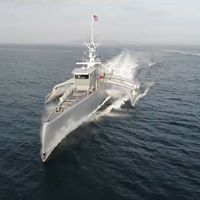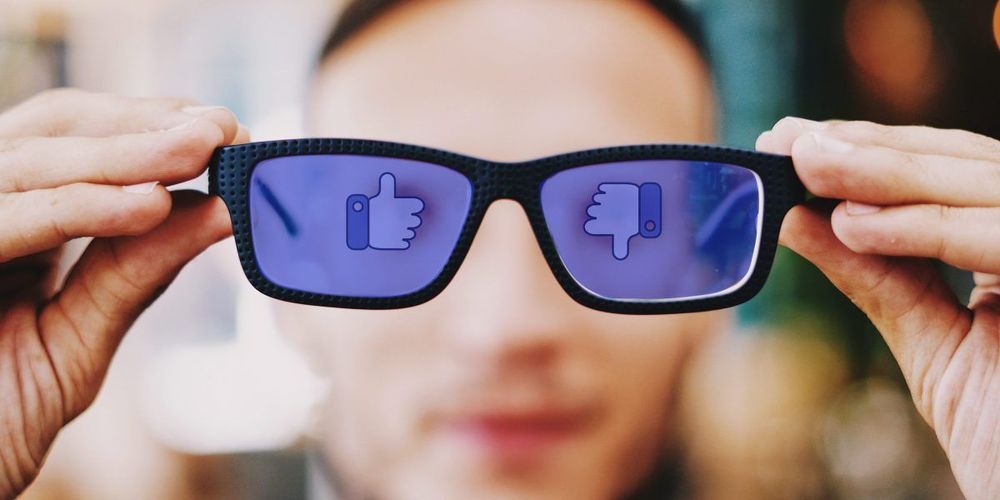(Plant-e)
Get the latest international news and world events from around the world.
How do dolphins use echolocation to navigate the deep seas?
Echolocation is like a smartphone for dolphins; they use it to navigate, and they can’t live without it. 🐬.



Facebook is using bots to simulate what its users might do
Has developed a new method to play out the consequences of its code.
The context: Like any software company, the tech giant needs to test its product any time it pushes updates. But the sorts of debugging methods that normal-size companies use aren’t really enough when you’ve got 2.5 billion users. Such methods usually focus on checking how a single user might experience the platform and whether the software responds to those individual users’ actions as expected. In contrast, as many as 25% of Facebook’s major issues emerge only when users begin interacting with one another. It can be difficult to see how the introduction of a feature or updates to a privacy setting might play out across billions of user interactions.
SimCity: In response, Facebook built a scaled-down version of its platform to simulate user behavior. Called WW, it helps engineers identify and fix the undesired consequences of new updates before they’re deployed. It also automatically recommends changes that can be made to the platform to improve the community experience.

Space and Missile Systems Center awards $35 million Space Test Program
The U.S. Space Force’s Rocket Systems Launch Program (RSLP) Office at Kirtland Air Force Base, Albuquerque, New Mexico, part of the Space and Missile Systems Center’s Launch Enterprise, today awarded a $35 million task order to VOX Space, LLC of El Segundo, California, for the Space Test Program-S28 (STP-S28) launch service. This is the first task order under the Orbital Services Program-4 (OSP-4) Indefinite Delivery/Indefinite Quantity (IDIQ) contract.
STP-S28 is a complex mission that will deliver a number of technology demonstrations to orbit, such as Space Domain Awareness and communications advancement, and inform future space system development.
VOX Space, a U.S.-incorporated, wholly-owned subsidiary of Virgin Orbit, LLC, will utilize three launches of the LauncherOne rocket to deliver 44 small satellites to low earth orbit. The first launch is tentatively planned for October 2021.

Space industry consortium concerned about financial health of small businesses
WASHINGTON — The Space Enterprise Consortium — an organization created in 2017 to attract space companies to work on military contracts — is canvassing firms to gauge the impact of the coronavirus pandemic on businesses.
The consortium known as SpEC is run by the U.S. Space Force’s Space and Missile Systems Center in Los Angeles. It has more than 350 member companies, many of them space startups and small businesses.
In an April 15 email the consortium asked members to identify those that have fewer than 50 employees.

Haptics researchers find that the biomechanics of the skin can perform useful tactile computations
As our body’s largest and most prominent organ, the skin also provides one of our most fundamental connections to the world around us. From the moment we’re born, it is intimately involved in every physical interaction we have.
Though scientists have studied the sense of touch, or haptics, for more than a century, many aspects of how it works remain a mystery.
“The sense of touch is not fully understood, even though it is at the heart of our ability to interact with the world,” said UC Santa Barbara haptics researcher Yon Visell. “Anything we do with our hands—picking up a glass, signing our name or finding keys in our bag—none of that is possible without the sense of touch. Yet we don’t fully understand the nature of the sensations captured by the skin or how they are processed in order to enable perception and action.”

As more work from home, Dell unveils new BIOS shield
As millions of employees are suddenly working from home, computer security threats are on the rise. The sudden rush to set up home offices means many users working on insufficiently protected devices are exposing businesses to unprecedented new exposure to malicious hackers.
“While the world is grinding to a halt, cyber-attacks are on the rise, preying on public fear and anxiety,” says Yenni Tim, researcher of Cybersecurity at the University of New South Wales Business School in Sydney, Australia.
In an effort to combat security threats, Dell Technologies last week released a utility that will protect one of the most sensitive components of a computer, the BIOS. Frequently the target of the most malicious malware assaults, the BIOS oversees critical computer processes, from boot-up to system configuration parameters.

Why did a Chinese university hire Charles Lieber to do battery research?
Among the ongoing mysteries surrounding last week’s arrest of Harvard University nanoscientist Charles Lieber is the precise nature of the research program Lieber was conducting in his cooperation with Chinese researchers.
Lieber was arrested on 28 January on charges of making false statements to U.S. law enforcement officials and federal funding agencies about a collaboration he forged with researchers in China. He was released two days later on a $1 million bond. An affidavit outlining the charges against Lieber notes that in January 2013, he signed an agreement between Harvard and Wuhan University of Technology (WUT) in China. According to the affidavit, “The stated purpose of the agreement, which had a five-year effective term, was to ‘carry out advanced research and development of nanowire-based lithium ion batteries with high performance for electric vehicles.’”
Officials at WUT have not responded to requests for comment on their agreement with Lieber. But it outlines just the kind of high-tech work that U.S. prosecutors involved in efforts to investigate Chinese attempts to acquire advanced technology from U.S.-based researchers say they are concerned about. They allege that the Chinese government has used such collaborations to improperly take advantage of the federally funded research enterprise, and gain an edge in economic and military advances.